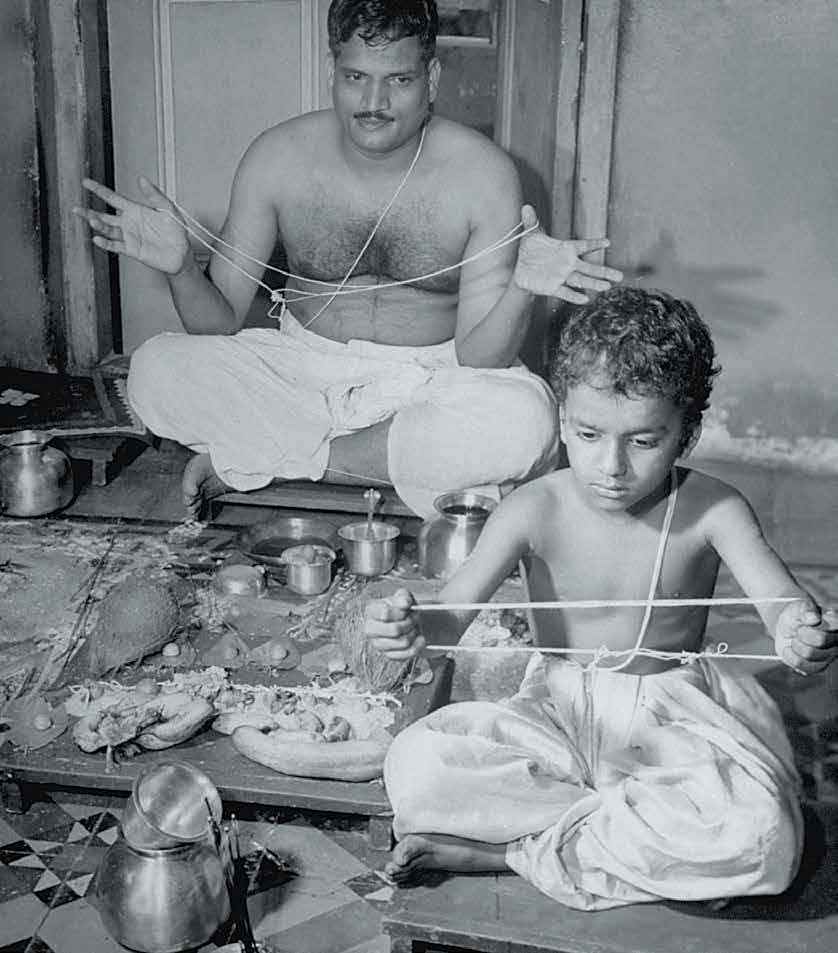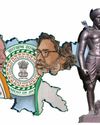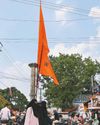The sacred thread is rich in history and many-faceted in its meanings

BETWEEN conception and cremation, a Hindu was to have his lifespan punctuated by a total of 16 major samskaras (‘rites of passage’ or ‘initiation ceremonies’) out of which the upanayana samskara is one of the few that still survive in practice. It was primarily meant as an enabler for the study of the Vedas and performance of Vedic sacrifices. Therefore, it is available only to male members from the first three tiers of classical Hindu society, namely, Brahmins, Kshatriyas, and Vaishyas, who can be approximately (if somewhat inaccurately) understood as the intellector class, the warrior class, and the mercantile class respectively. However, there are clear statements in Hindu religious literature to the effect that ‘in earlier times’, the initiation was extended to females also from these classes, and there are hints pointing to the ceremony being inclusive enough to cover members from the fourth class as well. However, it is unambiguous that males from the first three classes are entitled to upanayana. It is the ‘second birth’, which makes them dvi-ja, that is, ‘twice-born’.
The rite enjoins the wearing of a ceremonial string, named the yajnopaveeta (janeu in Hindi). Since it was available only to ‘upper-caste’ Hindus, it also became a desirable symbol and many Hindus would wear it—regardless of the classically given entitlement—in order to demonstrate that they belonged to a ‘high caste’. In particular, it came to be adopted in many caste-based ‘reform movements’ that came up in the late nineteenth and early twentieth centuries. Before that, however, it seems that the non-Brahmins stopped being particular about wearing it long ago in history and the association of the yajnopaveeta with the Brahmin had grown to be nearly exclusive.
Bu hikaye Outlook dergisinin December 18, 2017 sayısından alınmıştır.
Start your 7-day Magzter GOLD free trial to access thousands of curated premium stories, and 9,000+ magazines and newspapers.
Already a subscriber ? Giriş Yap
Bu hikaye Outlook dergisinin December 18, 2017 sayısından alınmıştır.
Start your 7-day Magzter GOLD free trial to access thousands of curated premium stories, and 9,000+ magazines and newspapers.
Already a subscriber? Giriş Yap

Trump's White House 'Waapsi'
Donald Trump's victory in the US presidential election may very well mean an end to democracy in the near future

IMT Ghaziabad hosted its Annual Convocation Ceremony for the Class of 2024
Shri Suresh Narayanan, Chairman Managing Director of Nestlé India Limited, congratulated and motivated graduates at IMT Ghaziabad's Convocation 2024

Identity and 'Infiltrators'
The Jharkhand Assembly election has emerged as a high-stakes political contest, with the battle for power intensifying between key players in the state.

Beyond Deadlines
Bibek Debroy could engage with even those who were not aligned with his politics or economics

Portraying Absence
Exhibits at a group art show in Kolkata examine existence in the absence

Of Rivers, Jungles and Mountains
In Adivasi poetry, everything breathes, everything is alive and nothing is inferior to humans

Hemant Versus Himanta
Himanta Biswa Sarma brings his hate bandwagon to Jharkhand to rattle Hemant Soren’s tribal identity politics

A Smouldering Wasteland
As Jharkhand goes to the polls, people living in and around Jharia coalfield have just one request for the administration—a life free from smoke, fear and danger for their children

Search for a Narrative
By demanding a separate Sarna Code for the tribals, Hemant Soren has offered the larger issue of tribal identity before the voters

The Historic Bonhomie
While the BJP Is trying to invoke the trope of Bangladeshi infiltrators”, the ground reality paints a different picture pertaining to the historical significance of Muslim-Adivasi camaraderie